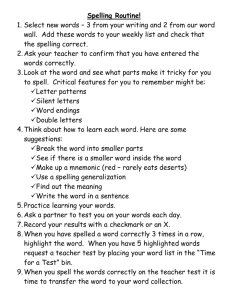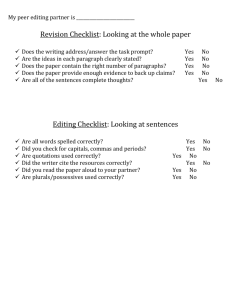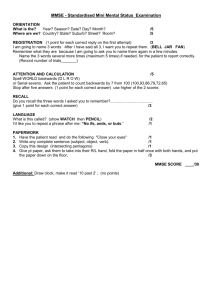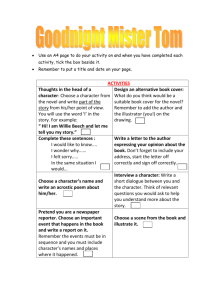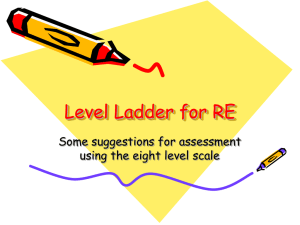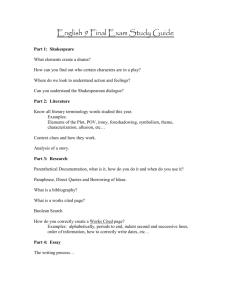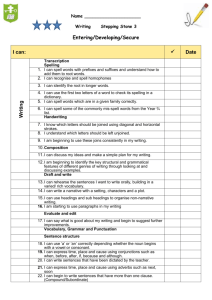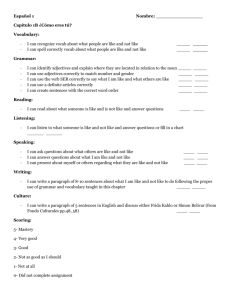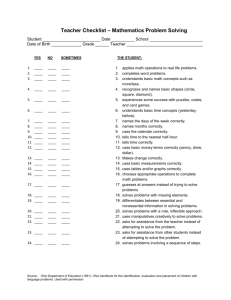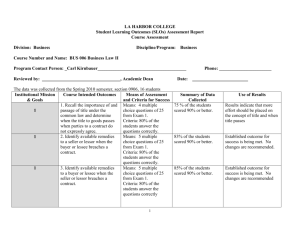Folstein Mini Mental Status - University of Iowa Health Care
advertisement
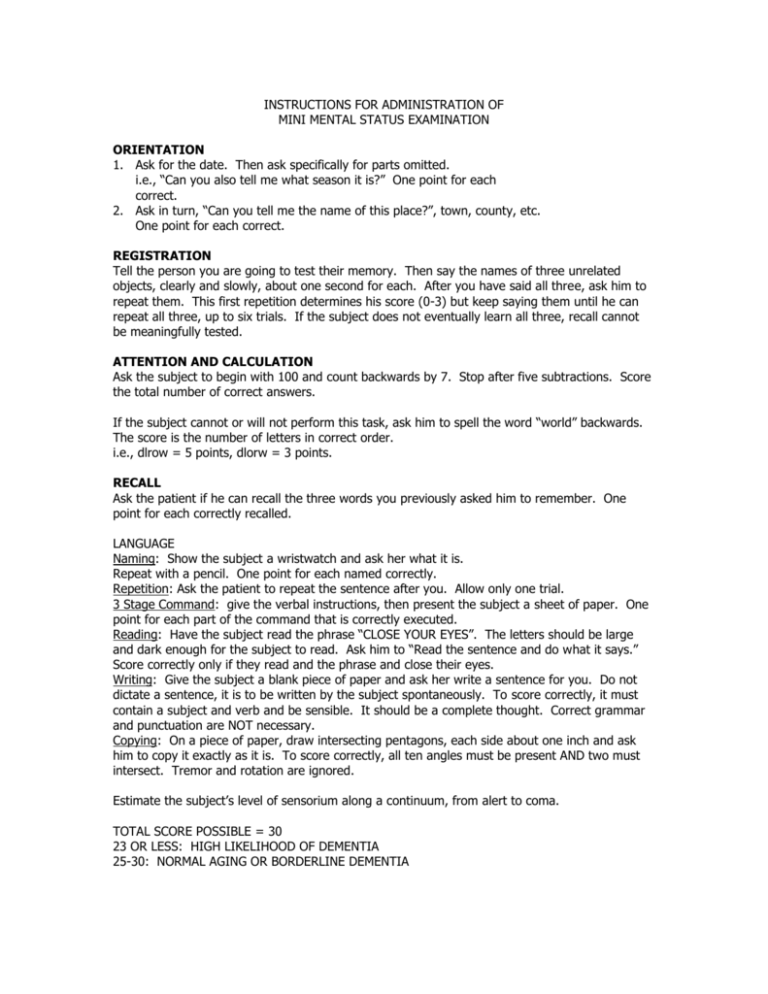
INSTRUCTIONS FOR ADMINISTRATION OF MINI MENTAL STATUS EXAMINATION ORIENTATION 1. Ask for the date. Then ask specifically for parts omitted. i.e., “Can you also tell me what season it is?” One point for each correct. 2. Ask in turn, “Can you tell me the name of this place?”, town, county, etc. One point for each correct. REGISTRATION Tell the person you are going to test their memory. Then say the names of three unrelated objects, clearly and slowly, about one second for each. After you have said all three, ask him to repeat them. This first repetition determines his score (0-3) but keep saying them until he can repeat all three, up to six trials. If the subject does not eventually learn all three, recall cannot be meaningfully tested. ATTENTION AND CALCULATION Ask the subject to begin with 100 and count backwards by 7. Stop after five subtractions. Score the total number of correct answers. If the subject cannot or will not perform this task, ask him to spell the word “world” backwards. The score is the number of letters in correct order. i.e., dlrow = 5 points, dlorw = 3 points. RECALL Ask the patient if he can recall the three words you previously asked him to remember. One point for each correctly recalled. LANGUAGE Naming: Show the subject a wristwatch and ask her what it is. Repeat with a pencil. One point for each named correctly. Repetition: Ask the patient to repeat the sentence after you. Allow only one trial. 3 Stage Command: give the verbal instructions, then present the subject a sheet of paper. One point for each part of the command that is correctly executed. Reading: Have the subject read the phrase “CLOSE YOUR EYES”. The letters should be large and dark enough for the subject to read. Ask him to “Read the sentence and do what it says.” Score correctly only if they read and the phrase and close their eyes. Writing: Give the subject a blank piece of paper and ask her write a sentence for you. Do not dictate a sentence, it is to be written by the subject spontaneously. To score correctly, it must contain a subject and verb and be sensible. It should be a complete thought. Correct grammar and punctuation are NOT necessary. Copying: On a piece of paper, draw intersecting pentagons, each side about one inch and ask him to copy it exactly as it is. To score correctly, all ten angles must be present AND two must intersect. Tremor and rotation are ignored. Estimate the subject’s level of sensorium along a continuum, from alert to coma. TOTAL SCORE POSSIBLE = 30 23 OR LESS: HIGH LIKELIHOOD OF DEMENTIA 25-30: NORMAL AGING OR BORDERLINE DEMENTIA MINI MENTAL STATUS EXAM PATEINT’S NAME: _____________ _________________________ Date: _____________________ Client’s Highest Level of Education: __________ Maximum Score Score ORIENTATION 5 ( ) What is the (year) (season) (date) (day) (month)? 5 ( ) where are we: (state) (county) (town) (hospital (floor)? 3 ( ) REGISTRATION Name 3 objects: One syllable words, 1 second to say each. Then ask the patient all 3 after you have said them. Give 1 point for each correct answer. Then repeat them until he learns all 3. Count trials and record. Trials ______________ ATTENTION AND CALCULATION 5 ( ) Serial 7’s. 1 point for each correct. Stop after 5 answers. Alternatively spell “world” backwards. 100 – 93 – 86 – 79 – 72 – 65 – 58 RECALL 3 ( ) Ask for 3 objects repeated above. Give 1 point for each correct. LANGUAGE 9 ( ) Name a pencil, and watch (2 points) ( ) Repeat the following: “No ifs, and or buts.” (1 point) ( ) Follow a 3-stage command: “Take this paper in your right hand, fold it in half, and put it on the floor.” (3 points) ( ) Read and obey the following: “Close your eyes” (1 point) ( ) Write a sentence. (1 point) ( ) Copy design. (1 point) ___________ Total Score Assess level of consciousness _________________________________________ along a continuum. (Alert) (Drowsy) (Stupor) (Coma) Close your eyes.
